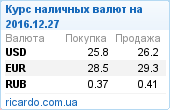DIE CASTING ALLOYS
Die casting alloys are normally non-ferrous and there is a large number available with a wide range of physical and mechanical properties covering almost every conceivable application a designer might require. Aluminum and zinc alloys are the most widely used. Followed by magnesium, zinc-aluminum (ZA) alloys, copper, tin and lead. Zinc, lead and tin based alloys are classified as low melting point metals because they turn melt at less than 725°F (385°C). Zinc-aluminum (ZA) alloys have a slightly higher melting range of 800°F to 900°F (426°C to 482°C). Aluminum and magnesium alloys are considered to be moderate melting point alloys, being cast in the 1150°F to 1300°F (621°C to 704°C) range. Copper alloys are considered to be high melting point alloys, over 1650°F (899°C). Low melting point alloys are cast in hot chamber machines. Intermediate and high melting point alloys are cast in cold chamber machines.
ALUMINUM ALLOYS
Aluminum die casting alloys (Table 1) are lightweight, offer good corrosion resistance, ease of casting, good mechanical properties and dimensional stability. Although a variety of aluminum alloys can be die cast from primary or recycled metal, most designers select a standard alloy listed below. Special alloys for special applications are available but their use usually involves significant cost premiums:
A360 -- Selected for best corrosion resistance and pressure tightness.
A380 -- The most common and cost effective of all die casting alloys. Provides the best combination of utility and cost.
A383 & A384 -- These alloys are a modification of 380. Both provide better die filling but with a moderate sacrifice in mechanical
properties such as toughness.
A390 -- Selected for special applications where high strength, fluidity and wear-resistance/bearing properties are required.
A413 (A13) -- Used for maximum pressure tightness and fluidity.
Table 1
ALUMINUM DIE CASTING ALLOYS
(Composition, Properties & Characteristics)
ALUMINUM DIE CASTING ALLOYS
(Composition, Properties & Characteristics)
| ALLOY COMPOSITION (% max or range) | A360 | A380 | A383 | A384 | A390 | A413 (A13) |
| Silicon | 9-10 | 7.5-9.5 | 9.5-11.5 | 10.5-12 | 16-18 | 11-13 |
| Iron | 1.3 | 1.3 | 1.3 | 1.3 | 1.3 | 1.3 |
| Copper | 0.6 | 3-4 | 2-3 | 3-4.5 | 4-5 | 1.0 |
| Magnesium | 0.4-0.6 | 0.10 | 0.10 | 0.10 | 0.45- 0.65 | 0.10 |
| Nickel | 0.50 | 0.50 | 0.30 | 0.50 | 0.10 | 0.50 |
| Zinc | 0.50 | 3.0 | 3.0 | 3.0 | 1.5 | 0.50 |
| Tin | 0.15 | 0.35 | 0.15 | 0.35 | 0.20 | 0.15 |
| Titanium | - | - | - | - | 0.20 | — |
| Total others | 0.25 | 0.50 | 0.50 | 0.50 | 0.20 | 0.25 |
| Aluminum | Bal. | Bal. | Bal. | Bal. | Bal. | Bal. |
Ukraine,
e-mail: ukrbas@gmail.com
tel: +380686958849








